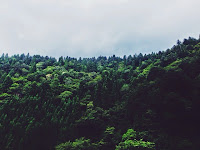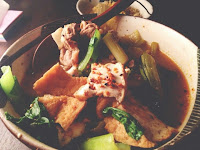The Mountain Goddess, the Stonefish, and the Laughing Men

On February 7 each year, local men in Owase, a small city in Mie prefecture sandwiched by mountains and ocean, perform an *interesting* ritual to ensure good weather and abundant crops in the year ahead. First, the men first carve giant phalluses and model farming tools from local cedar and bamboo. Second, they stuff their pockets with stonefish (okoze), an unsightly and highly venomous creature. Proceeding to a small worship hall in a grove of cinnamon trees, they offer the wooden implements and sake to the mountain goddess while laughing boisterously and mocking the hideous fish. "BAHAAHAHAHAHAHA," the men roar. "This is no fish at all!" According to local lore, when the sea god and the mountain god competed to see who could collect more "fruits" in their respective realms, the sea god emerged victorious thanks to the help of stonefish. The losing mountain god, a jealous female deity who detests "real" women, must therefore be specially



